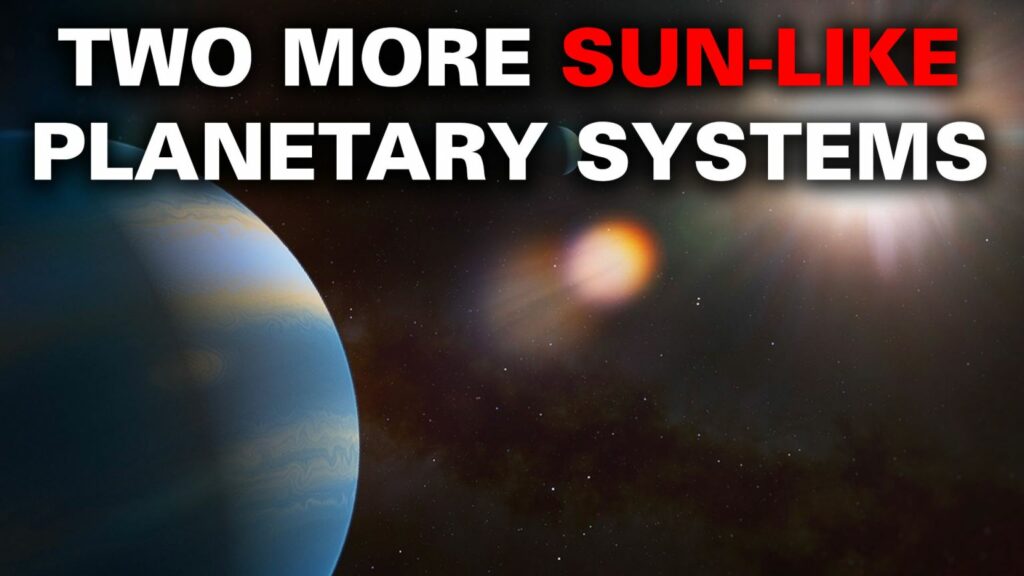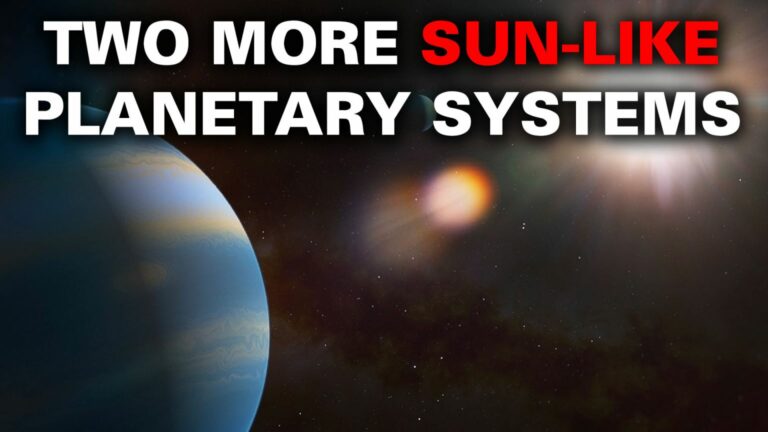Astronomers Discover Dual Planetary Systems Orbiting Sun-Like Stars
NASA’s Transiting Exoplanet Survey Satellite (TESS) has been highly productive, identifying over 5000 exoplanet candidates. To confirm the existence of these planets, the telescope’s data management researchers have engaged a team of volunteer classifiers.
In a recent paper published in Astronomy & Astrophysics, a group of researchers from Brazil believes they have identified three planets with a high degree of certainty, and these planets happen to orbit stars that closely resemble our Sun. These planets are situated in two distinct star systems, named TOI-2141 and TOI-1736. TOI-2141 is positioned approximately 250 light years away and, although slightly older than our Sun, shares nearly identical size characteristics. On the other hand, TOI-1736 is located 290 light years away, boasting a similar age and temperature as our Sun.
However, it is marginally larger and possesses more heavy elements, potentially influencing the planet formation process. Notably, TOI-1736 is a binary star system, a point that will be discussed later. Exoplanets are typically categorized into different classes. The planets identified in TOI-2141 and TOI-1736 fall into two distinct categories known as “Super-Jupiters” and “mini-Neptunes,” with these classifications referencing planets in our own solar system.

Within TOI-2141, a solitary planet named TOI-2141b exists—a mini-Neptune characterized by a scorching surface temperature of 450 degrees Celsius. Its orbital period, slightly over 18 days, suggests potential tidal locking to its parent star. With a surface diameter about three times that of Earth, a staggering mass of 24 times that of our planet, and indications of a rocky core enveloped in a potentially gaseous water-filled atmosphere,
TOI-2141b appears to be the sole planet in the system, at least based on the limited observational time dedicated to it. Contrastingly, TOI-1736 unveils a more intricate system. Researchers have identified two planets orbiting the larger of the binary star pair in this system. Both planets are situated close enough to their host star to experience minimal interaction from its binary companion, a factor that could significantly complicate their orbits if not for this limited interference. One of these planets, named TOI-1736b, shares the classification of a mini-Neptune. It boasts a diameter two and a half times that of Earth and a mass approximately 13 times larger. Orbiting its parent star every 7.1 days, TOI-1736b’s proximity results in higher temperatures, with an anticipated surface temperature reaching up to 800 degrees Celsius.
Its companion, TOI-1736c, is exceptionally massive—a “super-Jupiter” that surpasses Jupiter’s size by nine times. This immense size places it close to the threshold of becoming a star in its own right, although it ultimately found its place within the habitable zone of TOI-1736. Despite being a gas giant devoid of a solid surface,
TOI-1736c likely hosts a system of moons, akin to Jupiter, with the potential for one of them to harbor liquid water on its surface. Furthermore, there is a third potential planet in the TOI-1736 system, although observations conducted with TESS and a 1.93m telescope at the Observatoire de Haute-Provence did not extend long enough for confirmation. Additional data is imperative, particularly in the realm of exoplanet exploration, as is the case with many scientific endeavors. Expect more insights to emerge from both TESS and other sources in the near future.
This article is republished from universetoday under a Creative Commons license. Read the original article.
Do not forget to share your opinion with us to provide you with the best posts !




0 Comments